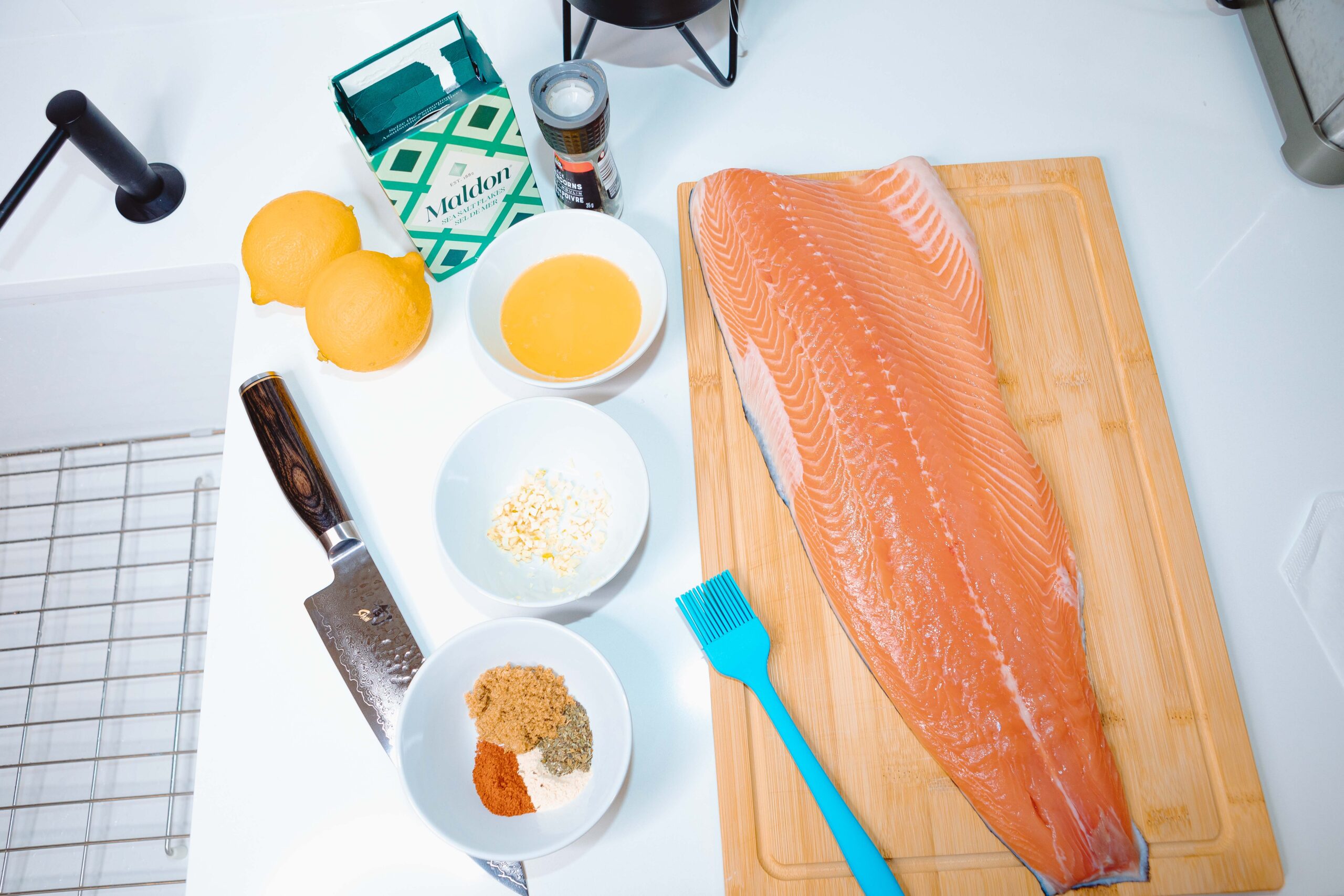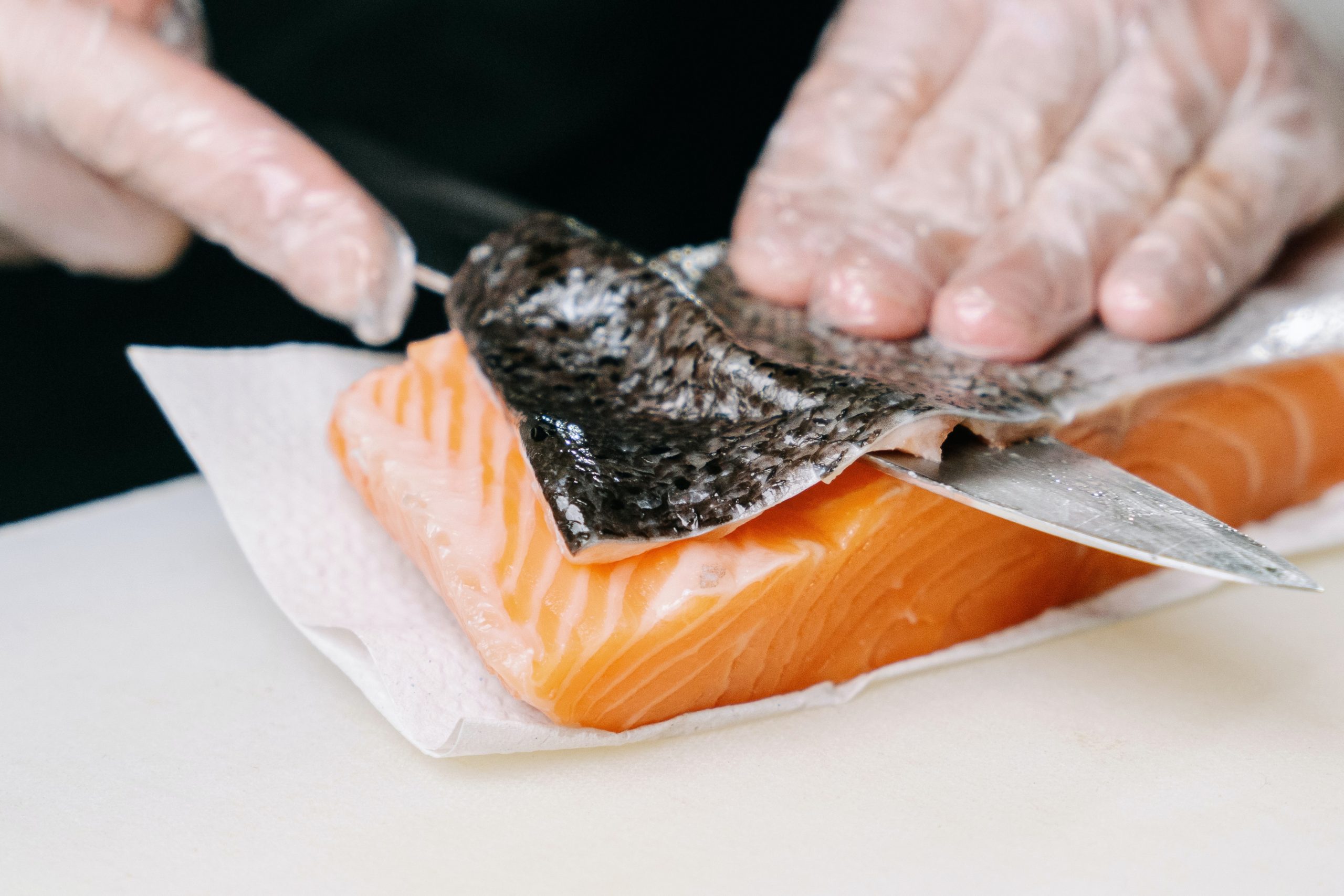
Raw Fish Tips: Everything you need to know about handling raw fish at home
Eating seafood raw is a delicious and healthy way to enjoy food from the sea. And most people love it! Think about poke bowls, ceviche, sushi, and carpaccio. These are all raw fish dishes that we love to enjoy.
More often than not, people have no hesitation about eating raw seafood in a restaurant, but when it comes to preparing it at home, it’s a whole different ballgame. Preparing raw fish can be a bit intimidating, especially if you’ve never done it before.
But it doesn’t have to be.
The biggest things to keep in mind when handling raw fish is to ensure proper and clean handling and storage to reduce the risk of food-borne illness and ensure a quality product. This helpful guide will walk you through how to identify the best fish for raw consumption and how to keep your raw fish (whether you’re eating it raw or cooking it) safe and high-quality for consumption.

What to look for when purchasing fish to consume raw
Look for fish that’s labelled as “sashimi grade” or “sushi grade”. These terms indicate that the fish is safe to eat raw. There is actually no governing body that “grades” fish the same way we grade beef. Although bodies like Health Canada and the Food and Drug Administration (FDA) issue different guidelines and processes for handling fish meant for raw consumption, the guidelines are not intended to determine the quality of the fish in the way that marbling determines the quality of beef – only its relative safety for eating raw. The terms “sushi grade” and “sashimi grade” are simply used by sellers to indicate that the fish is of a high enough quality to be safely consumed raw.
Pay attention to the size of the cuts – especially if you’re new to raw fish. (This is mostly if you’re planning to use your fish in a poke bowl). Some “poke” cuts are smaller than others and depending on preferences, you may not enjoy the texture of a larger cut of raw fish. Personally, I like my tuna to be cut up pretty small for poke bowls, which is why I always buy the poke cut yellowfin tuna from Caudles Catch. It’s cut just to my liking!
If you’re buying your fish fresh (not frozen), keep in mind my golden tips for spotting fresh fish at the seafood counter: avoid fish that smells fishy, looks brown/discoloured, or has cloudy eyes.
Once you’ve picked your perfect fish, place it in a separate plastic bag to prevent leakage with any other groceries you have. And of course, you should head straight home after buying your fish in order to get it into the fridge right away. Maintaining a cool temperature is key for maintaining the quality of raw fish.
My personal recommendation when buying fish to consume raw is to buy frozen sashimi-grade fish. I know this sounds completely backwards, but just hear me out. Frozen fish is usually the safest to consume raw because the process of freezing kills any parasites.
FDA guidelines state that prior to consuming raw fish, the fish must be frozen at specific temperatures and stored frozen for a certain period in order to effectively kill parasites.
Now, of course if you’re on an island somewhere in Hawaii where fresh sashimi grade tuna is sold at every Foodland in town, you’re probably safe to just buy the fresh poke or ceviche. But since I don’t live on a coast, I prefer to buy any seafood that I intend to consume raw frozen.
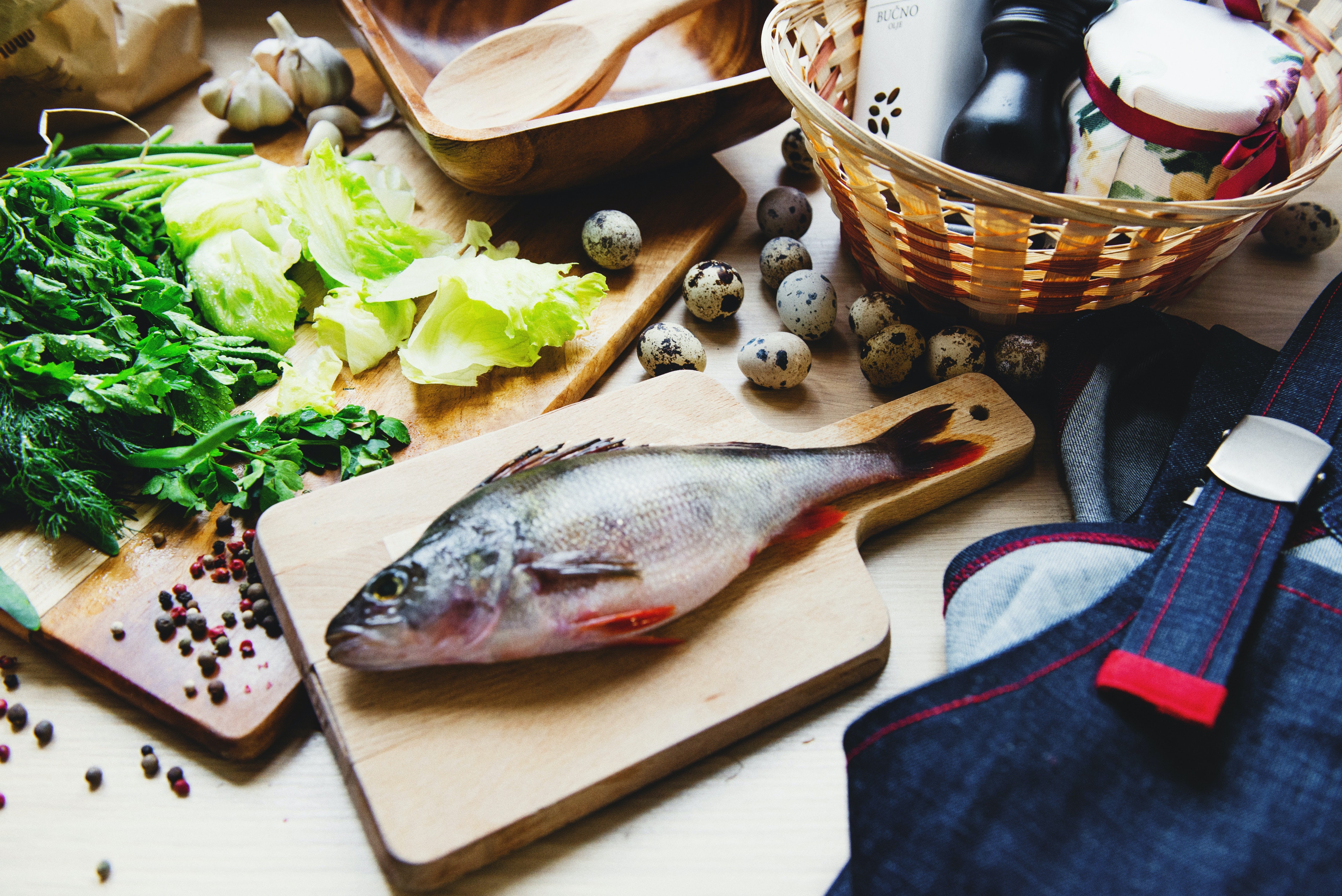
How to handle raw fish at home
Okay, you’ve picked the perfect fish and just brought it home. What now? It’s important to continue to handle fish properly at home to ensure food safety and avoid cross contamination. Keep these tips in mind as you prepare your seafood.
1. Keep your fish cold, either on ice or in the fridge
As I mentioned above, keeping your fish cool is key to maintaining its quality. It’s also important for food safety. Keep your fish in the fridge or on ice until you’re ready to consume it.
2. Keep your prep area and tools clean to avoid cross contamination
Be sure to wash your hands well before and after handling raw fish. Your work area, including cutting boards, and utensils should be thoroughly cleaned with hot soapy water after being touched by raw fish and should not be used for other foods until they’re properly cleaned. This will prevent cross contamination.
3. Thaw your fish slowly
If you’ve purchased frozen fish, thaw it slowly in a freezer overnight or in a bowl of cool water for a few hours. (While the key to cooking fish is high and fast, thawing fish is low and slow.)
Raw Fish Recipes
Got your fish and ready to dive in? Check out these raw fish recipes below!
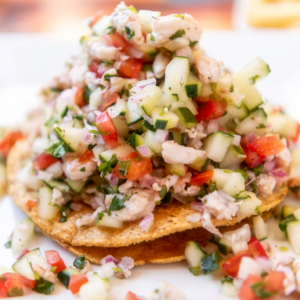
Spot Prawn Ceviche
Ingredients
- 1-2 lbs spot prawns
- 4 tbsp olive oil
- juice of 4 limes
- 1 jalapeño finely diced
- 1/2 cucumber diced
- 1/2 sweet onion diced
- 1 avocado diced
- 1/2 tomato diced
- 1 tbsp sea salt
- 1 tbsp fresh ground pepper
- 1 bunch of cilantro
Instructions
- Cut prawns into 1-inch pieces and put them into a large shallow bowl.
- Add onion, tomatoes, jalapeño, and cucumber. Mix together.
- Add olive oil, lime juice, salt, and pepper. Mix well. (Optional: if you have the time, you can let this marinate in the citrus juice for an hour or two before serving or serve immediately).
- Add avocados and cilantro just before serving.
- Serve on its own or with lightly seasoned tortilla chips.
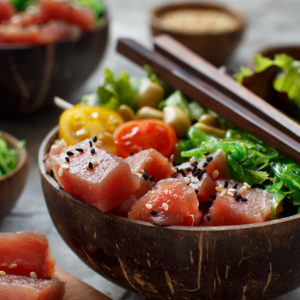
Hawaiian-Inspired Poke Bowls
Equipment
- Large pot for cooking rice
Ingredients
- 1/2 lb sashimi grade tuna cut into cubes
- 1/4 cup chopped green onions
- 2 tbsp soy sauce
- 1 tsp sesame oil
- 1 tbsp sesame seeds
- 2 tbsp mayonaise
- 1 cup cooked sushi rice
- 1/2 cup chopped cucumbers
- 1/2 avocado chopped
- sirracha to taste
Instructions
- Cook the rice: If you don't already have cooked rice on hand, put a pot on while you prepare the rest of the bowl.
- Prepare the tuna: Mix tuna with sesame oil, soy sauce, and sesame seeds. Stir and set aside.
- Make the chipotle mayo: In a small bowl, combine the mayonnaise and sriracha. Add water if the mixture is too thick to drizzle.
- Assemble the bowl: In a medium bowl, add the cooked rice, tuna mixture, chopped avocado and cucumber. Top with chopped green onions, sesame seeds, and more soy sauce to taste. Drizzle chipotle mayo and top with green onions. Enjoy!



